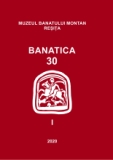A Roman cameo with the representation of Gorgo Medusa from the collection of Botosani County Museum
A Roman cameo with the representation of Gorgo Medusa from the collection of Botosani County Museum
Author(s): Ana Cristina Hamat, Adela KovácsSubject(s): Archaeology, Museology & Heritage Studies, Ancient World
Published by: Editura Mega Print SRL
Keywords: Roman Empire; cameo; Medusa; 3rd c. AD;
Summary/Abstract: The current article brings back into discussion a special artifact discovered over 25 years ago and currently located in the deposits of the Botoșani County Museum. It is a cameo with the representation of Gorgo Medusa, which so far has not benefited from an adequate presentation, being brought to the attention of the general public through a short note in a local publication. The cameo was discovered in 1994 (Pl. II, Fig. 1, 2), with the occasion of archaeological research carried out in the village of Coțușca (Botoșani County). It appeared in a survey conducted 1 km away from the necropolis of the 4th -5 th centuries from Nichiteni. The item is a cameo made of onyx in two layers, being dated in II-III centuries AD. The depiction of Gorgo Medusa on cameos is one of the most popular subjects for such artifacts and therefore it became the pretext for one of the most famous glyphic series, with a popularity that predates the Empire era and lasts until late Antiquity, being also, one of the favorite symbols in the art of the Middle Ages and even in the modern times.
Journal: BANATICA
- Issue Year: 1/2020
- Issue No: 30
- Page Range: 399-412
- Page Count: 14
- Language: English

